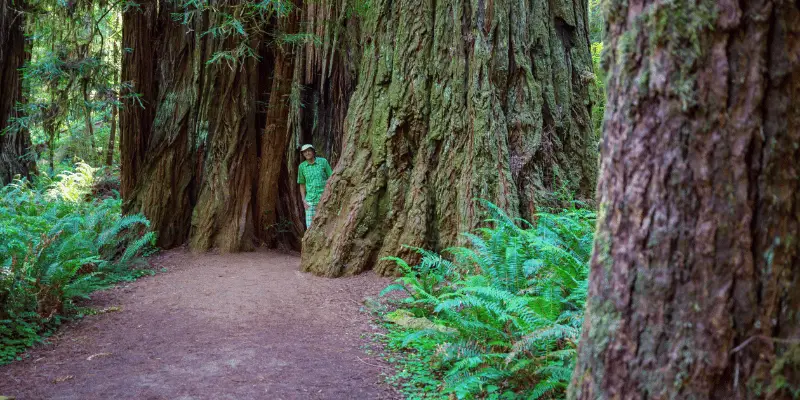White cedar and red cedar are two distinct species, with different characteristics and uses. White cedar, also known as Thuja occidentalis, is a durable wood commonly used for outdoor applications due to its resistance to decay and insect infestation.
On the other hand, red cedar, also known as Juniperus virginiana, is widely recognized for its aromatic properties and is often used for indoor furniture and decorative purposes. Both types of cedar have unique qualities and are utilized in various industries.
Understanding the differences between white cedar and red cedar can help in choosing the most suitable option for specific projects, whether it’s for construction, woodworking, or landscaping. Now, let’s delve deeper into the distinct features of white cedar and red cedar, along with their respective advantages and applications.
Understanding The Differences Between White Cedar And Red Cedar
For those considering the choice between white cedar and red cedar, it’s important to understand their differences. While white cedar is known for its more lightweight and stable properties, red cedar is valued for its natural resistance to decay and insects.
This understanding helps in making an informed decision when it comes to selecting the right type of cedar for specific projects.
White cedar and red cedar are two popular choices for outdoor and indoor use. Each type of cedar offers its own unique characteristics, making it important to understand the differences between them, especially when making a purchase decision. Let’s delve into the specific characteristics of white cedar and red cedar.
Characteristics Of White Cedar
White cedar, also known as Northern White Cedar, is a durable and versatile wood with a pale color that naturally weathers to a silvery gray patina.
– Aromatic: White cedar has a distinct, pleasant aroma often associated with cedarwood.
– Resistance to Decay: Known for its natural resistance to decay and insect infestation, making it ideal for outdoor furniture, fencing, and siding.
– Lightweight: White cedar is lightweight and easy to work with, making it a popular choice for DIY projects.
– Texture: The wood has a fine, straight grain and a smooth texture, making it suitable for staining or painting.
– Eco-Friendly: White cedar is often a sustainable choice due to its regenerative properties and slow growth, making it an eco-friendly option.

Characteristics Of Red Cedar
Red cedar, also known as Western Red Cedar, is a popular choice for outdoor applications due to its natural durability and resistance to decay.
– Aromatic: Like white cedar, red cedar also exudes a pleasant aroma, often used for lining closets and drawers.
– Resistance to Decay: Red cedar is naturally resistant to decay, moisture, and insect damage, making it a preferred choice for outdoor construction projects.
– Color: The wood boasts a distinct reddish-brown hue that darkens over time, adding character and warmth to any setting.
– Lightweight: Red cedar is lightweight, making it easy to handle and work with for various woodworking projects.
– Dimensional Stability: Known for its low shrinkage factor and excellent stability, red cedar maintains its shape and form in various weather conditions.
Understanding the differences between white cedar and red cedar is essential for selecting the right wood for your specific project. Whether you are considering outdoor furniture, decking, or home siding, their unique characteristics offer a range of options to suit your needs.
Pros And Cons Of White Cedar For Outdoor Use
When it comes to choosing the right wood for outdoor projects, White Cedar is a popular option known for its durability and natural resistance to decay and insects. However, as with any material, it’s essential to weigh the advantages and limitations before making a decision. In this discussion, we’ll explore the pros and cons of using White Cedar for outdoor applications.
Advantages Of Using White Cedar
White Cedar presents several advantages that make it an excellent choice for outdoor use:
- Natural Resistance: White Cedar is naturally resistant to rot, decay, and insect damage, reducing the need for chemical treatments.
- Stability: It has minimal shrinkage and exceptional stability, particularly when exposed to varying weather conditions.
- Aesthetic Appeal: The light color and fine texture of White Cedar make it an attractive choice for outdoor furniture, fencing, and decking.
- Workability: This wood is easy to work with, allowing for smooth cuts and shaping, making it ideal for various outdoor projects.
Limitations Of Using White Cedar
Despite its advantages, White Cedar also has limitations that should be considered before its use:
- Cost: White Cedar can be more expensive compared to other types of wood commonly used for outdoor projects.
- Prone to Discoloration: When exposed to sunlight, White Cedar can develop a grayish hue over time, requiring regular maintenance to preserve its natural color.
- Vulnerability to Scratches: While it is naturally resistant to decay, White Cedar is susceptible to scratches and dents, which may affect its appearance.
- Limited Availability: In certain regions, White Cedar may not be as readily available as other types of wood, making it less accessible for some projects.
Pros And Cons Of Red Cedar For Outdoor Use
When choosing wood for outdoor use, red cedar is a popular choice due to its exceptional qualities. However, with any material, there are certain advantages and limitations to consider. Understanding the pros and cons of red cedar for outdoor use can help in making an informed decision for your outdoor projects.
Advantages Of Using Red Cedar
Red cedar offers a range of benefits that make it a desirable choice for outdoor applications:
- Natural Resistance: Red cedar is naturally resistant to decay, rot, and insect infestation, making it an ideal choice for outdoor structures such as decks, fences, and siding.
- Weather Resistance: It has outstanding dimensional stability, meaning it is less likely to warp or shrink when exposed to the elements, making it suitable for outdoor furniture and structures.
- Appealing Aesthetic: Red cedar’s natural reddish-brown hues and distinct grain patterns provide a beautiful, rustic appearance that enhances the visual appeal of outdoor spaces.
- Durable: It has a long lifespan when properly maintained, offering lasting durability and value for outdoor projects.
Limitations Of Using Red Cedar
Despite its numerous advantages, red cedar also has certain limitations to consider:
- Cost: Red cedar can be more expensive than other wood varieties, which may impact the overall budget for outdoor projects.
- Maintenance: While it is naturally resistant to decay, regular maintenance such as sealing and staining is necessary to prolong its lifespan and maintain its appearance.
- Availability: Red cedar may not be as readily available in certain regions, making sourcing and obtaining the wood a potential challenge for some outdoor projects.
Best Uses Of White Cedar And Red Cedar For Different Outdoor Spaces
When it comes to choosing the right type of wood for outdoor projects, white cedar and red cedar are often top contenders due to their durability, beautiful natural hues, and resistance to insects and decay. Understanding the best uses of each type of cedar can help you make informed decisions for your outdoor spaces.
White cedar, known for its light color and natural resistance to decay, is an excellent choice for outdoor furniture and decking. Its fine texture and straight grain make it ideal for creating durable and visually appealing outdoor pieces. Its resistance to rot and insect damage ensures that white cedar furniture and decking can withstand the elements for years to come.
Red cedar, prized for its rich reddish-brown color and natural durability, is commonly used for fencing and siding in outdoor spaces. The natural oils present in red cedar contribute to its resistance to decay and insect infestation, making it a popular choice for outdoor projects that require high levels of protection against the elements. Its distinctive aroma and striking appearance add character to any outdoor setting.
Frequently Asked Questions On White Cedar Vs Red Cedar
What Is The Difference Between White Cedar And Red Cedar?
White cedar and red cedar differ in color, scent, and durability. White cedar has a lighter color, a mild aroma, and is more resistant to rot and decay. Red cedar, on the other hand, has a reddish hue, a strong, distinctive scent, and is highly resistant to insects.
Which Cedar Is Better For Outdoor Furniture?
If you’re looking for outdoor furniture, red cedar is the better option due to its natural oils that repel insects and resist rot and decay. It’s also a popular choice for its beautiful reddish-brown color that weathers to a silvery grey over time, giving it a timeless appeal.
What Are The Applications Of White Cedar And Red Cedar?
White cedar is commonly used for indoor applications such as closets, chests, and cabinets due to its light color and natural insect-repelling properties. In contrast, red cedar is popular for outdoor applications like decking, siding, and fences, thanks to its durability, resistance to rot and insects, and attractive color.
Conclusion
Both white cedar and red cedar have their own unique qualities. While white cedar is known for its durability and resistance to decay, red cedar stands out for its stunning appearance and natural oils. When choosing between the two, consider your specific needs and preferences to make the best decision for your project.



One thought on “White Cedar Vs Red Cedar: Choosing the Best for Your Outdoor Space”